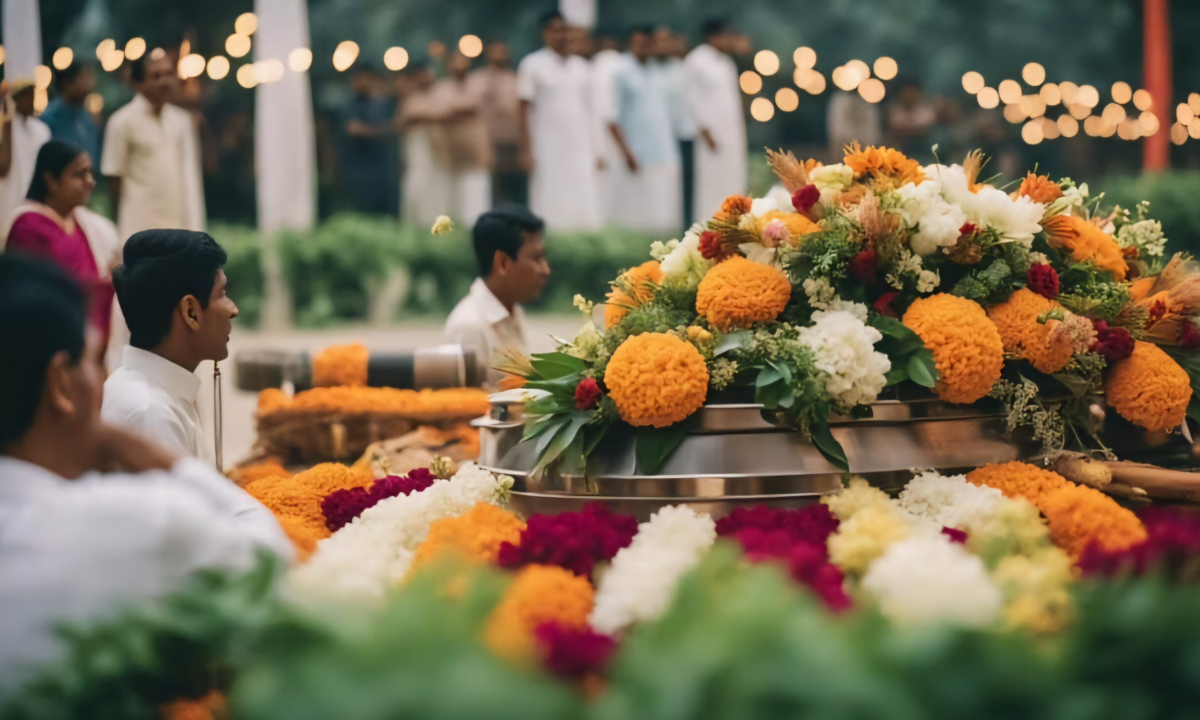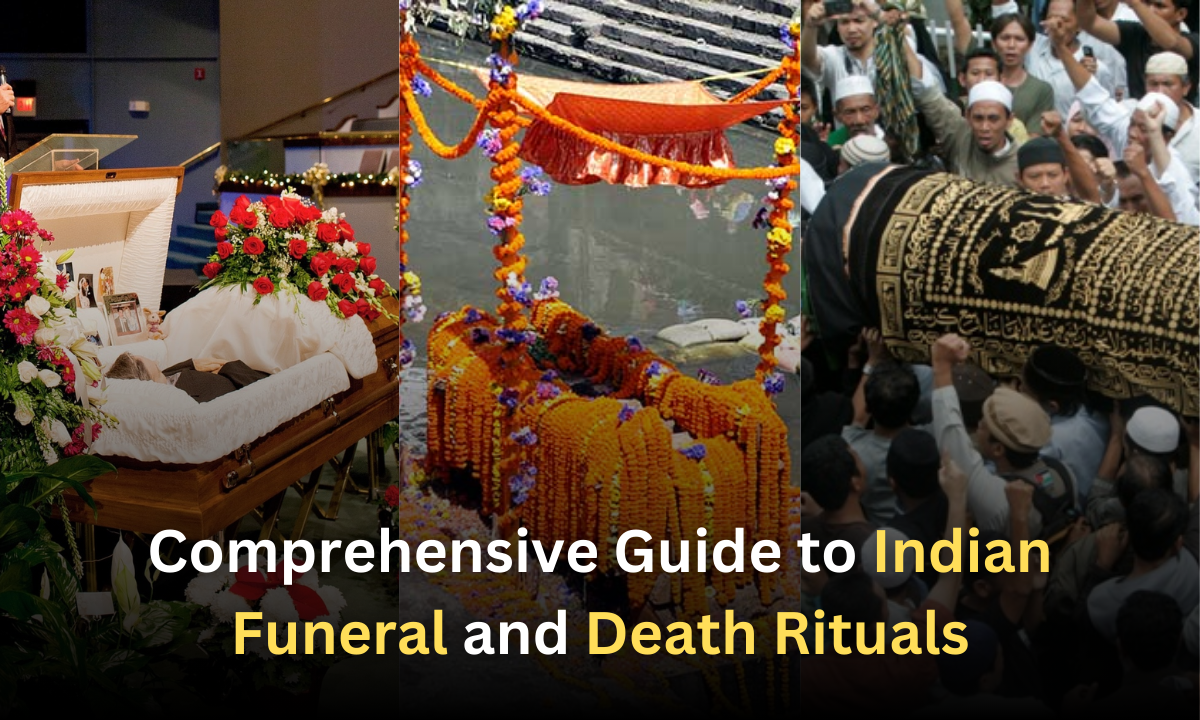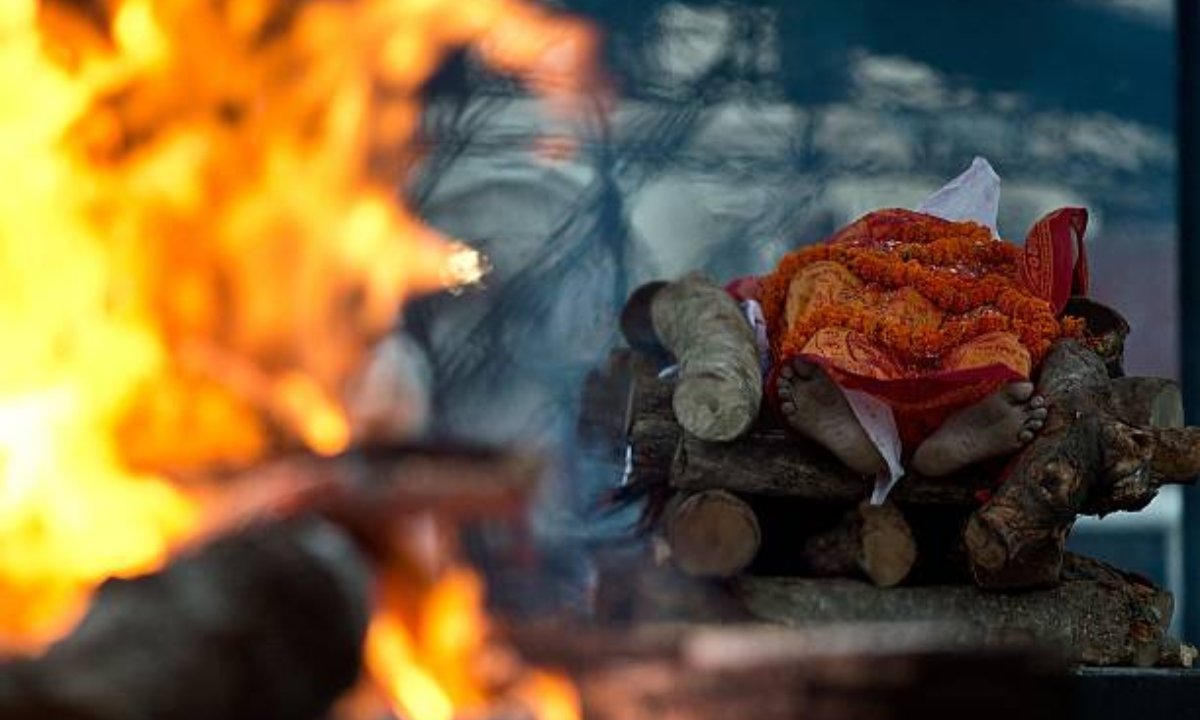India’s lands embrace many traditions because they maintain a deep cultural heritage with spiritual greatness. All dimensions of life contain multiple perspectives, including death-related practices. Traditional Indian death observances demonstrate spiritual values and traditions dedicated to honouring the departed soul. The article offers a straightforward and complete breakdown of traditional Indian funeral customs and funeral practices.
Understanding the Indian Perspective on Death
Death serves as a natural shift in Indian culture because they see it as a movement between different stages of life. Hindu belief states that the permanent aspect of the human being remains untouched by time while the body exists as a flow-through container. The Indian belief system determines the entire process of performing a funeral ceremony. Indian after death rituals pursue two essential goals which involve creating a calm passage for the soul after life and achieving liberation named Moksha.
Major Practices in Indian Funerals

Indian funeral customs from major religious perspectives across the country include the following practices:
1. Hindu Funeral Rituals
The funeral routine begins after the moment of death. Traditional beliefs define the corpse as transporting the departed soul so the body serves as a vessel for its passage. The standard funeral sequence appears as follows according to Hindu custom:
a. Preparing the Body
The first element of Hindu after death rituals consists of washing and maintaining the body. Close relatives of the deceased person usually perform this customary procedure. Traditional terms dictate that the deceased receive simple clothing with white garments because white represents both peace and spirituality. The deceased body may receive flower garlands while holy ash (vibhuti) along with sandalwood paste gets applied to the forehead.
b. Cremation Ceremony
Cremation constitutes the preferred burial practice in Hinduism. People believe fire (agni) through purification enables a complete detachment of the spirit from the body. Families along with priest members participate in sacred rituals that take place during the funeral at the cremation ground. Family members start their mantras while the closest male relative (usually the eldest son) creates a fire to burn the pyre.
c. Immersion of Ashes
The ashes derived from the cremation process are commonly placed in a holy river like Ganga for a symbolic ritual to free the departed soul from earthly bonds. A proper ritual performance grants peace to the dead soul according to religious beliefs.
d. Mourning Period and Shraddha
The duration of Hindu mourning corresponds to 10 to 13 days based on local traditions. From the beginning until the end of the mourning period, the family resists performing everyday activities along with the avoidance of pursuit of worldly enjoyment. A rite of passage called Shraddha serves as the final point which includes feeding ceremonies addressed to deceased souls along with offering tributes to ancestors’ spirits.
2. Muslim Funeral Rituals
Muslim death practices avoid complex customs while dedicating attention to both how an individual stands before divine judgment and the feelings of guilt experienced by survivors of death. A mistake in Muslim funeral protocol requires performing the service within one day after death occurs.
a. Cleansing the Body
Water washing of the deceased dead body forms the ritual practice of ghusl which occurs in Islamic traditions. When the body wrapping process ends the Islamic tradition requires covering of the deceased with a plain white shroud known as a kafan.
b. Janaza Prayer
At most funeral ceremonies one can find the special Janaza prayer that Muslim believers perform. The collective Janaza prayer seeks forgiveness for the deceased body during mosque or open-ground services.
c. Burial
Muslims strictly follow burial rites. Islam dictates that the deceased person must be laid in their grave with their face directed toward Mecca. The deceased receives well wishes from family members who seek divine blessings to ensure entry into paradise.
3. Sikh Funeral Rituals
Within Sikh belief structures death functions as a natural and destined element of God’s will (Hukam). A Sikh funeral service focuses on reconnecting the human soul with divine essence.
a. Tradition of Cremation
Sikhs also prefer cremation. The body is bathed, dressed modestly, and taken to a Gurdwara (Sikh temple) or another appropriate space for prayers and hymns from the Guru Granth Sahib—the holy book of Sikhs.
b. Bhog Ceremony
Ten days after the cremation, Sikh families hold the Bhog ceremony, which includes reading the Guru Granth Sahib and distributing free food in the community, known as Langar.
4. Christian Funeral Rituals
In Indian Christian communities, funerals take place with both seriousness and religious devotion through prayer.
a. Burial Process
After death Christian ceremonies start by preserving bodies through embalming and creating a formal presentation appearance for the corpse. As part of the funeral ritual, the deceased person receives placement inside a coffin where close relatives join at church services.
b. Funeral Service and Procession
The priest leads worship through hymns while delivering a religious speech during the funeral service. Family members along with friends normally deliver speeches at funeral ceremonies to celebrate the deceased person.
c. Mourning Practices
Christian families who mourn deceased individuals organise memorial services on specific dates after death including the seventh day and the 40th day.
Death Rituals Across Other Indian Religions
- Jains follow a tradition that includes belief in reincarnation along with the practice of detaching from material possessions. The chosen funeral practice for them is cremation then family members participate in spiritual discussions during a mourning period.
- Buddhists dedicate attention to rebirth just like their followers do. Monks perform prayer chants as part of their role to guide the soul of departing individuals toward enlightenment through cremation services in Bangalore which are widely practised in the region.
- Irrespective of their religious tradition Parsis (Zoroastrians) use the Tower of Silence to place bodies of deceased persons for exposure to sunlight with bird access. Sunlight along with birds have access to the deceased body in a symbolical representation of returning to natural elements.
Modern Changes in Indian Funerals
Modern urbanisation together with globalization processes has introduced significant changes to ancestral funeral customs across India. People are choosing environmentally-friendly cremation options together with minimally scaled-down death ceremonies which also include digital remembrance sites. Beyond their modern developments, these cultural traditions maintain respect for both remembrance rituals and spiritual traditions.
Conclusion
Indian funeral customs and after death rituals incorporate ancient ceremonies that express deep affection along with bowing down to the spiritual values of the departed souls. The funeral ceremony not only provides closure for the grieving family but also serves as a hopeful send-off for the soul’s journey ahead.
Whether driven by fire, water, earth, or air, these rituals reflect the deep interconnection between life, death, and the elements of nature. The deep respect and profound wisdom embedded in Indian funeral traditions become visible when we explore various cultural practices of India.
As a trusted provider of funeral services in Bangalore, Beleiv delivers both professional support and supportiveness to families who need guidance during their grieving period and provides respectful execution of all funeral rituals.




